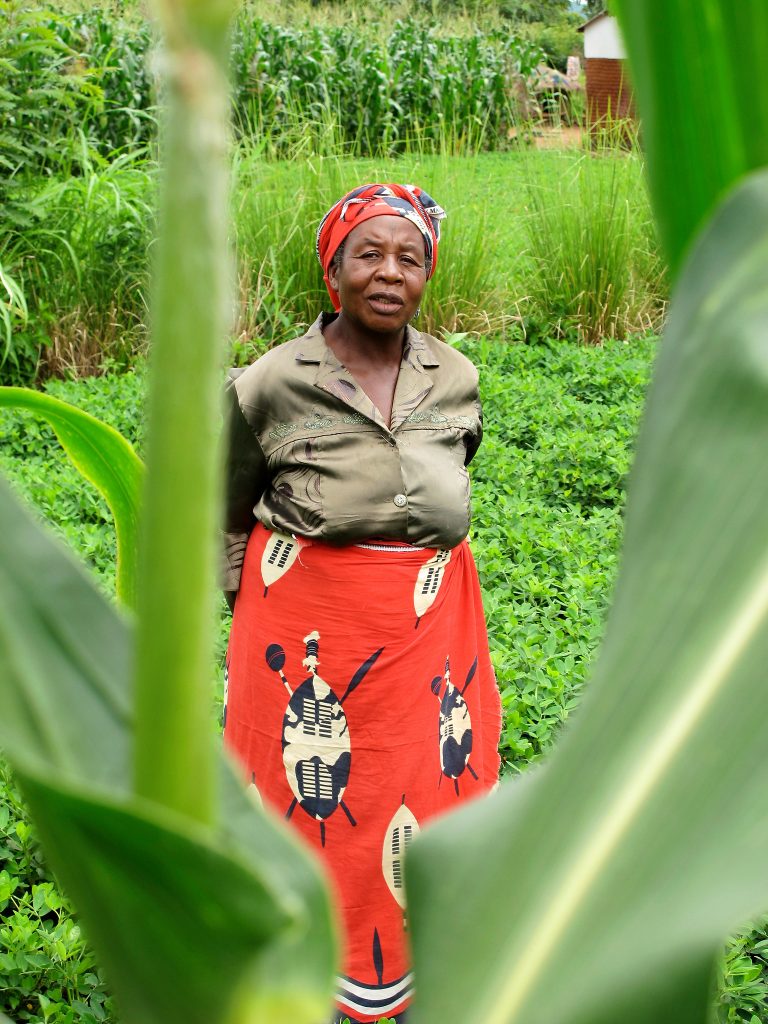
Despite wide-ranging, in-depth conservation agriculture studies conducted over many years, almost none consider gender and gender relations as a factor that may explain low adoption rates, according to the recently published paper “Gender and conservation agriculture in East and Southern Africa: towards a research agenda.”
The paper examines research to date on the interactions between conservation agriculture interventions – meaning minimal soil disturbance, permanent soil cover and crop rotation that can simultaneously boost yields, increase profits and protect the environment – and gender in East and Southern Africa and sets out a research agenda based on gaps observed. Given the increasing interest in conservation agriculture due to climate change impacts in the region, the authors also argue that greater attention to gender is needed in order to ensure successful interventions. The following Q&A with one of the study’s authors, Clare Stirling, CIMMYT Senior Scientist with the Sustainable Intensification Program based in Wales, UK, details the study’s findings and what is needed to ensure gender is included in future conservation agriculture interventions.
Q: How do conservation agriculture practices interact with gender?
A: There are many known and unknown ways in which conservation agriculture interacts with gender and the purpose of this paper is to review the evidence and identify gaps that exist. conservation agriculture is knowledge-intensive and can also be labor-intensive and, along with many soil improvement technologies, involves long-term investment with delayed returns. This clearly has important implications for women, as their ability to invest will depend on many factors such as entitlements, access to information, and their ability to act upon it.
If we take labor requirements as an example – many studies highlight labor shortages as a constraint to the adoption of conservation agriculture, particularly when zero tillage is not complemented by the application of herbicides. Without herbicide use, conservation agriculture techniques for land preparation increase weeding over and above plowing and ridging by as much as three times in maize production. In East and Southern Africa, this burden falls largely on women as weeding is largely a woman’s task. Studies conducted in several countries show that where (frequently subsidized) herbicides have been used, the release of women and children from weeding tasks results in multiple benefits, including more children attending school and more time for women to engage in income-generation activities.
Q: Why has gender been left out of many conservation agriculture studies to date?
A: I am not sure that this is a question that should be posed specifically in relation to conservation agriculture but could be asked of agronomic research in general. Things are improving, but I would suggest that the reason has been that gender is a challenging and complex issue that takes many of us out of our comfort zone both professionally and perhaps personally. It requires an interdisciplinary approach and a set of skills that many agricultural research centers simply have too limited a supply of and I include in this a critical mass of female research staff of sufficient seniority. Without this critical mass of gender expertise, agronomic research will continue to be designed and implemented according to the “male agronomist” norm.
Q: What impact has this had on conservation agriculture adoption in East and Southern Africa?
A: lncreased feminization of labor in smallholder agriculture has resulted in major changes in the roles and responsibilities of women in rural Africa, but still agricultural service suppliers and the wider policy environment in general remain locked into the conceptual norm of the primary farmer being male. This inevitably results in inappropriate targeting of research, extension services, and policy, and logic would tell us that it has also contributed to low adoption rates of conservation agriculture.
As the paper explains, the new norm of the “female primary farmer” has not resulted in their widespread recognition as such by external agencies or indeed within their communities. The ability of women-led households, or male-headed households with women as primary farmers, to adopt conservation agriculture may be compromised if government policies, extension systems, and other actors continue to design interventions around the conceptual norm of the male-headed household. This needs to change.
The paper summarizes the gender-related questions that remain to be addressed with regard to conservation agriculture, and there are many. There are overarching questions relating to intra-household decisions making, access to services, and labor. In addition, there are many more questions relating to specific aspects of conservation agriculture, such as the impacts of minimum tillage and weeding on labor; opportunity costs and how increased requirements are met; opportunities, constraints, and trade-offs of conservation agriculture-based crop diversification; and the tailoring of conservation agriculture-based information and training to women farmers.
Q: Moving forward, how can researchers address the gender gaps in conservation agriculture in their studies?
A: Gender-sensitive research needs to be mainstreamed into projects. In order to achieve this, we need more multidisciplinary teams including both male and female researchers of similar seniority. While there is a decent body of gender research on the socioeconomic aspects of agricultural technologies such as barriers to uptake and extension services, it seems that there is still a large gap in gender-sensitive agronomic research. What are the implications for gender of increased weeding, need for planting basins, crop diversification, and residue retention? All very basic questions that still need answering. So moving forward, we need more research that involves gender specialists working closely with agronomists on the design, implementation, evaluation, and scaling out of conservation agriculture-based practices.
 Capacity development
Capacity development 